
The Pre-Raphaelite Brotherhood was a group of English painters, poets, and art critics, founded in 1848 by William Holman Hunt, John Everett Millais, Dante Gabriel Rossetti, William Michael Rossetti, James Collinson, Frederic George Stephens and Thomas Woolner who formed a seven-member "Brotherhood" partly modelled on the Nazarene movement. The Brotherhood was only ever a loose association and their principles were shared by other artists of the time, including Ford Madox Brown, Arthur Hughes and Marie Spartali Stillman. Later followers of the principles of the Brotherhood included Edward Burne-Jones, William Morris and John William Waterhouse.

Simeon Solomon was a British painter associated with the Pre-Raphaelites who was noted for his depictions of Jewish life and same-sex desire. His career was cut short as a result of public scandal following his arrests and convictions for attempted sodomy in 1873 and 1874.

Winifred Nicholson was a British painter. She was a colourist who developed a personal impressionistic style, concentrating on domestic still life objects and landscapes. She often combined the two subjects as seen in her painting From Bedroom Window, Bankshead showing a landscape viewed through a window, with flowers in a vase in the foreground.
Events from the year 1849 in art.

Benedict William Read FSA was an English art historian. Usually known as Ben Read, he was the author of numerous books, essays and articles on nineteenth and twentieth century art history, and was one of the most authoritative writers in the second half of the twentieth century on British Victorian sculpture.

John Brett was a British artist associated with the Pre-Raphaelite movement, mainly notable for his highly detailed landscapes.
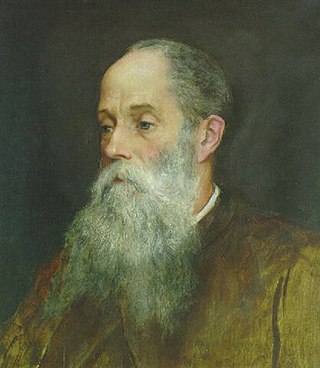
John Roddam Spencer Stanhope was an English artist associated with Edward Burne-Jones and George Frederic Watts and often regarded as a second-wave pre-Raphaelite. His work is also studied within the context of Aestheticism and British Symbolism. As a painter, Stanhope worked in oil, watercolor, fresco, tempera, and mixed media. His subject matter was mythological, allegorical, biblical, and contemporary. Stanhope was born in Cawthorne, near Barnsley, Yorkshire, England, and died in Florence, Italy. He was the uncle and teacher of the painter Evelyn De Morgan and encouraged then unknown local artist Abel Hold to exhibit at the Royal Academy, which he did 16 times.

John Charles Barrell FBA FEA is a British scholar of eighteenth and early nineteenth century studies.
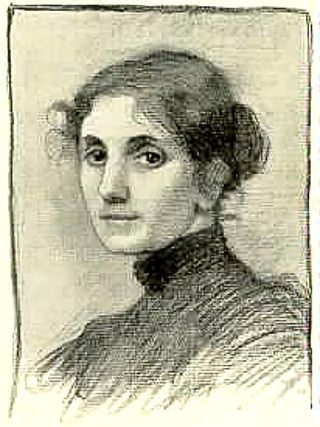
Marianne Stokes was an Austrian painter. She settled in England after her marriage to Adrian Scott Stokes (1854–1935), the landscape painter, whom she had met in Pont-Aven. Stokes was considered one of the leading women artists in Victorian England.

George Vicat Cole was an English painter.

Jeremy Gardiner is a contemporary landscape painter who has been based in the United Kingdom and the United States. His work has been featured in books. It has also been reviewed in The Boston Globe, Miami Herald, The New York Times, and British newspapers including The Guardian and The Observer. He is represented by the Portland Gallery in London.
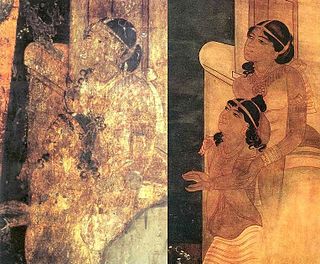
Christiana Jane Herringham, Lady Herringham was a British artist, copyist, and art patron. She is noted for her part in establishing the National Art Collections Fund in 1903 to help preserve Britain's artistic heritage. In 1910 Walter Sickert wrote of her as "the most useful and authoritative critic living".

Thomas Hearne was an English landscape painter, engraver and illustrator. Hearne's watercolours were typified by applying a wash of subtle subdued colours over a clear outline in fine brush, pen or pencil. His techniques were studied by younger artists such as Thomas Girtin and J. M. W. Turner.
Ann Sumner is an art historian, exhibition curator, author and former museum director. She is currently Visiting Professor at Manchester Metropolitan University and Chair of the Methodist Modern Art Collection.
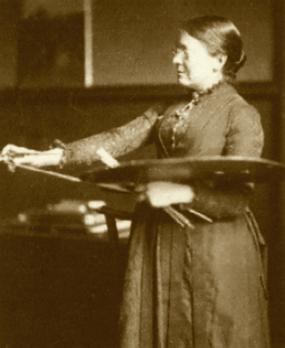
Anna Massey Lea Merritt was an American artist from Philadelphia who lived and worked in Great Britain for most of her life. A printmaker and painter of portraits, landscapes, and religious scenes, Merritt's art was influenced by the Pre-Raphaelites. Merritt was a professional artist for most of her adult life, "living by her brush" before her brief marriage to Henry Merritt and after his death.
Mark Louis Hallett is an English art historian specialising in the history of British art. He is the Märit Rausing Director of the Courtauld Institute of Art.
David Hersh Solkin, FBA is the Walter H. Annenberg Professor of the History of Art at the Courtauld Institute, which he joined in 1986. In 2007, Solkin became the institute's first dean and deputy director. Solkin is an expert in the art of J. M. W. Turner.

Rosa Brett, was a Pre-Raphaelite painter and sister of landscape artist John Brett. Their mother was Ann Brett and their father was an army surgeon, Captain Charles Curtis Brett (1789–1865). Rosa grew up in Dublin, but was known to travel on the continent, spending 1854–55 in Belgium for her health.
Andrew Frank Hemingway is professor emeritus of art history, University College London. He is a specialist in British landscape painting of the nineteenth century, which he interprets through a Marxist lens, and the historiography of Marxist art history.
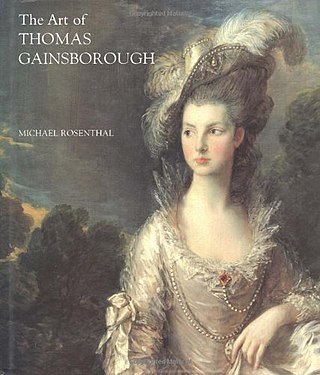
Michael J. Rosenthal is emeritus professor of the history of art at the University of Warwick. He is a specialist both in British art and culture of the eighteenth and early nineteenth centuries, and the arts of early colonial Australia.















